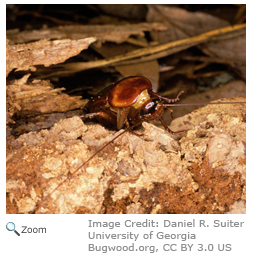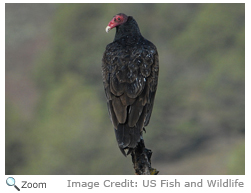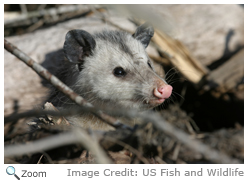Scavengers |
The Amazing Cockroach! Cockroaches are scavengers that eat all kinds of materials including paper, clothing and dead animals and plants. They are adapted to live in almost any environment and have been on earth longer than any other winged insect, over 340 million years. Cockroaches are scavengers that eat all kinds of materials including paper, clothing and dead animals and plants. They are adapted to live in almost any environment and have been on earth longer than any other winged insect, over 340 million years. There are 3,500 species of cockroaches in the world. There are 57 different species found in North America. Cockroaches like warm, humid, dark environments. They usually feed at night. Cockroaches have flattened bodies that make it easy for them to crawl into small spaces. Long antennae on the front of their heads help them feel their way around. Cockroaches have an interesting warning system. They have appendages on their underside called cerci. The cerci are very sensitive and help cockroaches detect vibrations and movement so they can scoot into a safe place. Most species of cockroaches live in the woods and feed on dead plants, but some species like the American and German cockroaches, often live in peoples' homes and feed on kitchen scraps and garbage. Believe It or Not Roaches can live for up to a week without their heads. After a week they will die because without their heads they can't drink water. | Where the Food Is
Adapted for Scavenging The turkey vultures is a scavenger. It only eats carrion. It soars over the land looking for dead animals. It has excellent eyesight and a keen sense of smell that helps it locate rotting meat. Because it doesn't hunt and kill it food its legs and claws are weaker that that of most birds. The turkey vulture has a bald head. This helps keep dead meat along with the bacteria it carries from collecting in the vulture's feathers while it is digging into an animal carcass. The turkey vulture also urinates on its legs. It's urine cools the vulture and the acids in the urine kill any bacteria that collected on the vulture's legs when it was stepping in the carcass. The turkey vultures is a scavenger. It only eats carrion. It soars over the land looking for dead animals. It has excellent eyesight and a keen sense of smell that helps it locate rotting meat. Because it doesn't hunt and kill it food its legs and claws are weaker that that of most birds. The turkey vulture has a bald head. This helps keep dead meat along with the bacteria it carries from collecting in the vulture's feathers while it is digging into an animal carcass. The turkey vulture also urinates on its legs. It's urine cools the vulture and the acids in the urine kill any bacteria that collected on the vulture's legs when it was stepping in the carcass.
Images
|

